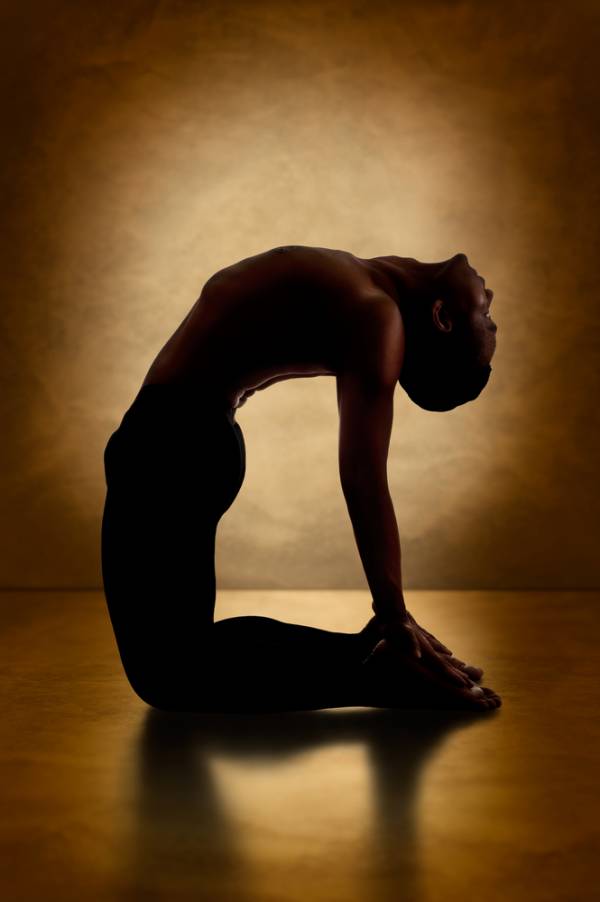Ask Willow YOUR questions! Our resident yoga expert, Willow Ryan, is here to give you guidance on yoga, meditation, self-development, and the mind-body connection. Email your question for her to willow@pulsebeatfit.com.
Dear Willow,
I am wondering your thoughts about the camel pose in yoga. Could you speak to what is going on in the body during camel? For me, this pose is very intense and has created a few “stars” in various classes. I usually have to reset myself a bit before moving into the next pose. Of all the poses I have tried on and off the wall, this one has taken a lot of time to develop.
Sincerely,
Dizzy Camel
Dear Dizzy Camel,
Ah, you mean the pose with the body positioned the complete opposite direction and range of motion as when we are leaning forward? Camel pose is not a simple position nor is it easy to do. It can be taught inadequately and feel terrible if not warmed into appropriately. Our spine is incredibly flexible when we are infants and through the years becomes more rigid with the tensing muscles. Camel pose can take quite a while to build the spinal dexterity to reverse the patterns of curves built from decades of the standard “S.”
The spine is coiled like a spring. Imagine taking a spring, uncoiling it, and then arcing it backwards. Yeah, that will make you lightheaded! Especially since you are exposing the carotid arteries, jugular veins, sternum, solar plexus, and diaphragm. These are all prominent breathing apparatus that when fully opened will draw in enough oxygen to launch a rocket.
Oxygen is a vital nutrient for our brain as well as muscles and organs. We can sustain life without food for approximately thirty days, live without water for around seven days, but cannot live more than eight minutes without oxygen. A person will lose consciousness within ten seconds of not receiving oxygen. Think about this. If when you arise from camel pose after all your deep breathing and intake of air you feel light headed, how little or much do you receive during your average day?
My guess is that you probably feel fatigued, foggy headed, or have physical pains or injuries you feel during the day. These are symptoms of hypoxia, or not receiving enough oxygen to your bloodstream, because you are not breathing much or deep enough.
Camel pose also requires stamina in the spinal muscles to hold up the reverse arc of the torso. The trapezius muscle holds the shoulders in place allowing the arms to release back and grab the wall or feet. The full pose should be a work with progress. You want to build strength and lessen the tensing of frontal flexing slowly.
Warm up poses for camel:
Warm up in these poses for at least 10 breaths before pursuing the deeper arc in camel.
- Bridge
- Cobra
- Boat
Recommendations for a slow-growing camel:
- Grab a block or rolled up mat, place it between your legs at your groin and squeeze lightly while flexing your glutes down to lengthen low back away from torso.
- Work camel with your pelvis and chest pressing into the wall.
- Press quadriceps into the wall to build leg connection and press chest up to increase an arc.
- Keep chin horizontal to floor and do not hang your head back. Instead, lengthen neck.
- Breathe slowly, smoothly, and deeply. Around an 8 count inhale. The exhale will need no prompting.
 Give these few tips a go and feel how the modifications open you up slowly. Notice how much more you are able to breathe and practice sustaining the pose for up to 10 breaths. Keep me posted on your results and the benefits you receive. Gains may be much more than simply coming out of the pose without being light headed. You may be able to accomplish more throughout your day with the added oxygen nutrients to your brain.
Give these few tips a go and feel how the modifications open you up slowly. Notice how much more you are able to breathe and practice sustaining the pose for up to 10 breaths. Keep me posted on your results and the benefits you receive. Gains may be much more than simply coming out of the pose without being light headed. You may be able to accomplish more throughout your day with the added oxygen nutrients to your brain.
Willow
(Click here for articles by Willow)
Photos courtesy of Shutterstock.






